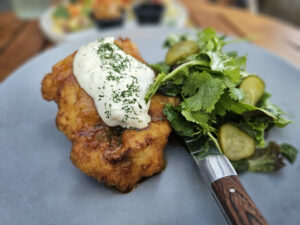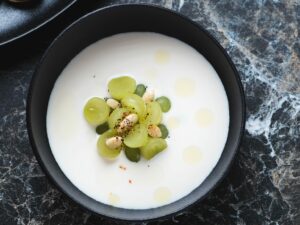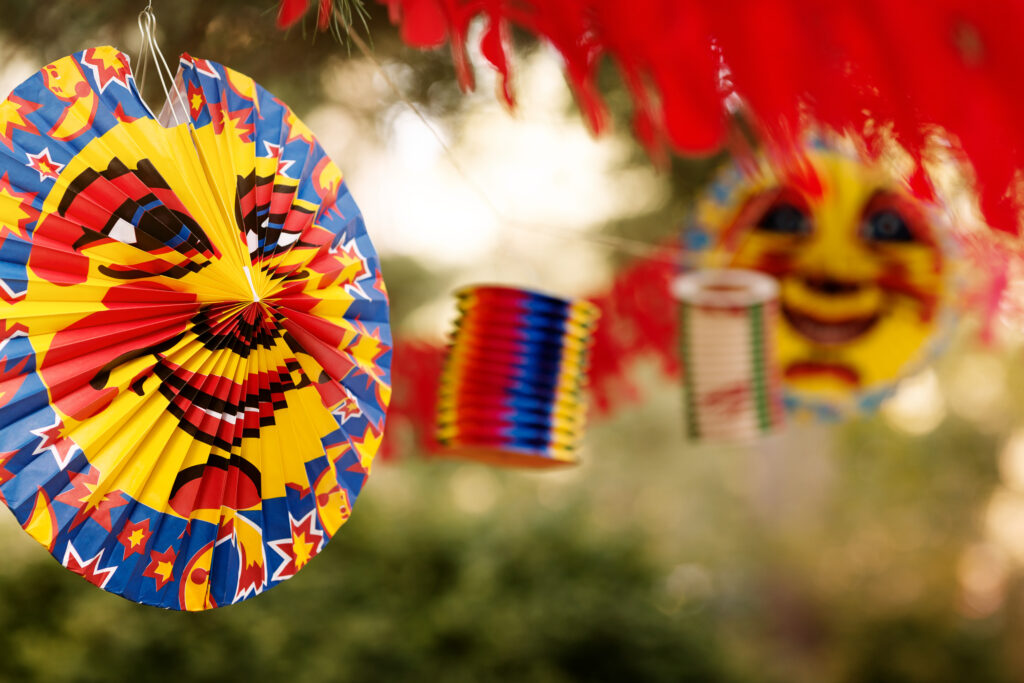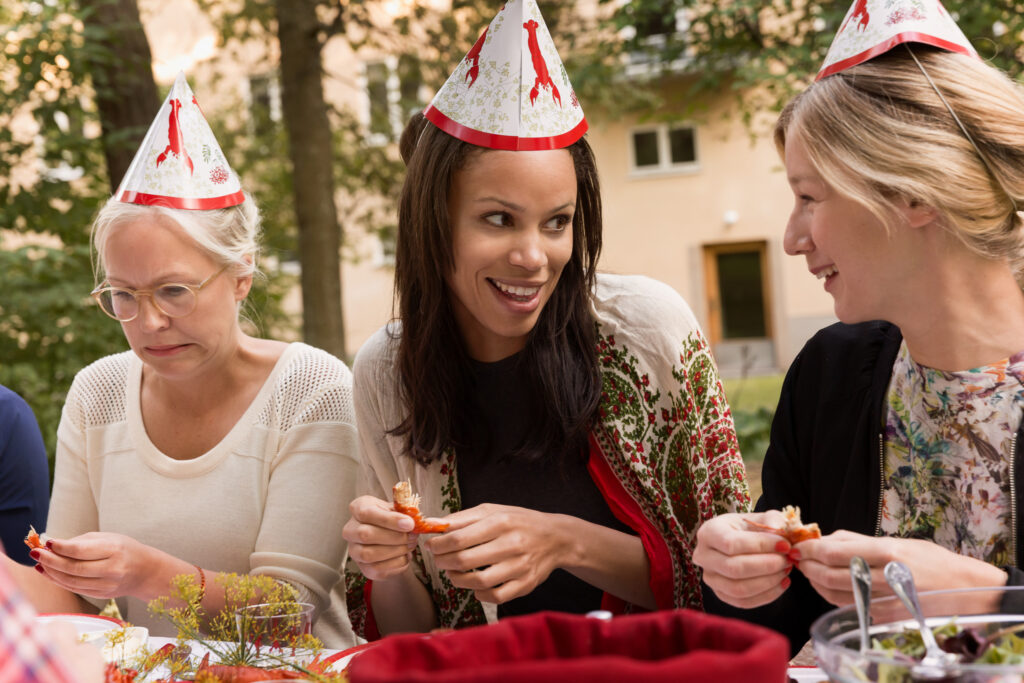In Sweden, summer’s end heralds the return of crayfish season and with it a host of “kräftskivor” (crayfish parties). For a few weeks in August, usually reserved Swedes kick off their shoes for one last summer festivity, donning party hats and adjusting bibs as they consume buckets of dill-brined crustaceans between rounds of schnapps and drinking songs.
On Aug. 19, Swedish chef Roberth Sundell will host a traditional kräftskiva at his Petaluma restaurant, Stockhome. The family-style menu will include plenty of dilled Swedish crayfish, along with side dishes like Crawfish Soup with Saffron Aioli, Cheese and Caramelized Onion Pie, Swedish Deviled Eggs and, for dessert, Lingonberry Cheesecake.
I won’t be able to attend the kräftskiva in Petaluma this year. But, as a native Swede, I am more than happy to offer you a crash course into the intricacies of a Swedish crayfish party.
First, a brief history lesson.
A centuries-old tradition
The Swedish kräftskiva is a centuries-old tradition celebrated in literature and songs that derives from a time when freshwater crayfish were exclusively consumed by the ruling elite.
(The first time crayfish are mentioned in relation to Swedish gastronomy is in a communication from King Erik XIV to the bailiff of Nyköping Castle dated 1562. In the letter, the king commands the harvesting of large amounts of crayfish for his sister Anna’s wedding.)
With the rise of the Swedish middle class at the end of the 19th century, crayfish, served whole and cold after being boiled in salted water and seasoned with dill, began to be enjoyed by a larger population.
This sudden increase in crayfish consumption had a depletive effect on the domestic crustacean population. As a result, harvesting was forbidden from November until August 7.
And so the tradition of crayfish parties in August was begun. In 1994, crayfish restrictions were rescinded, but Swedes continue to honor the tradition of premiering the crayfish season in early August.
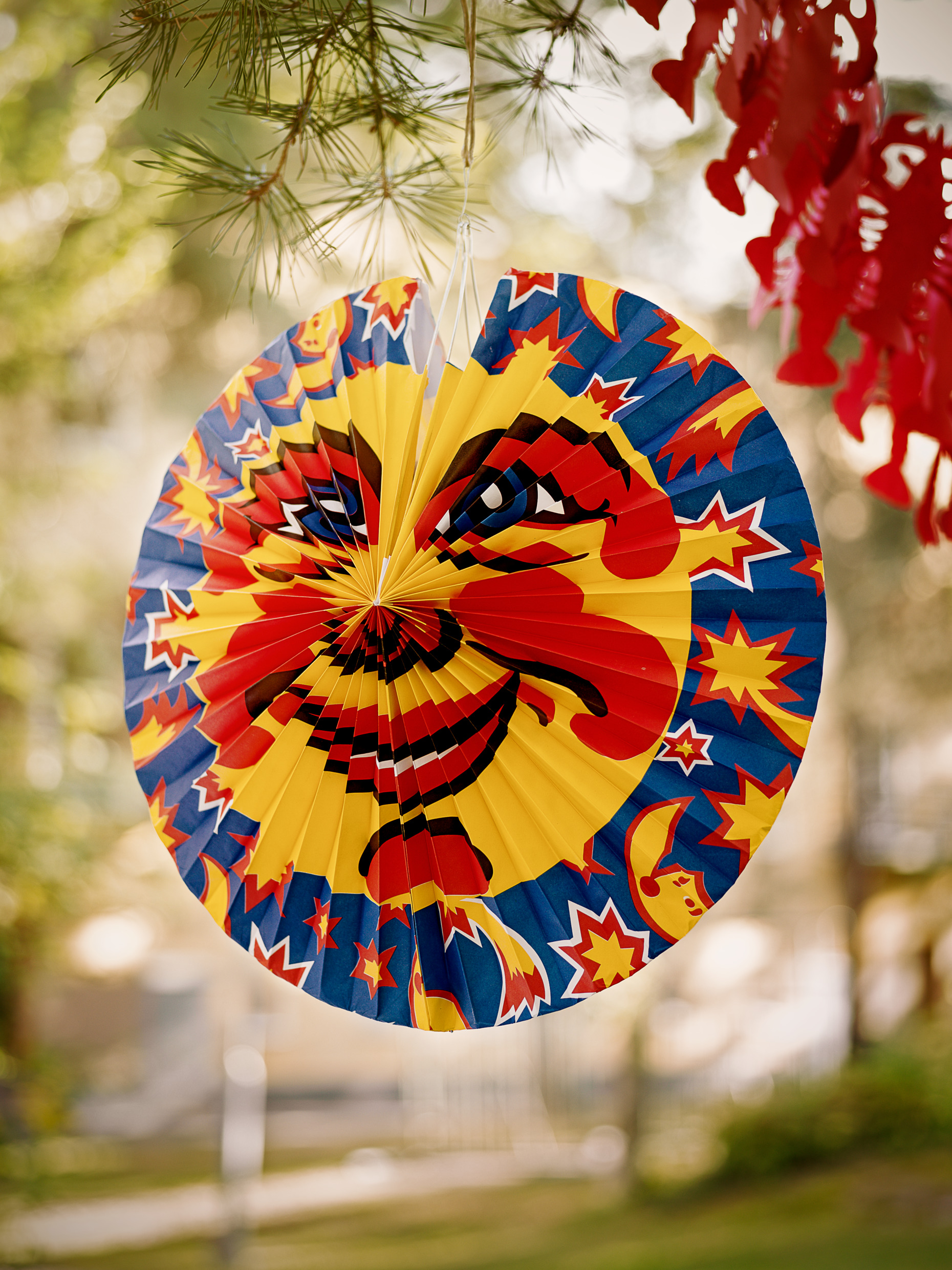
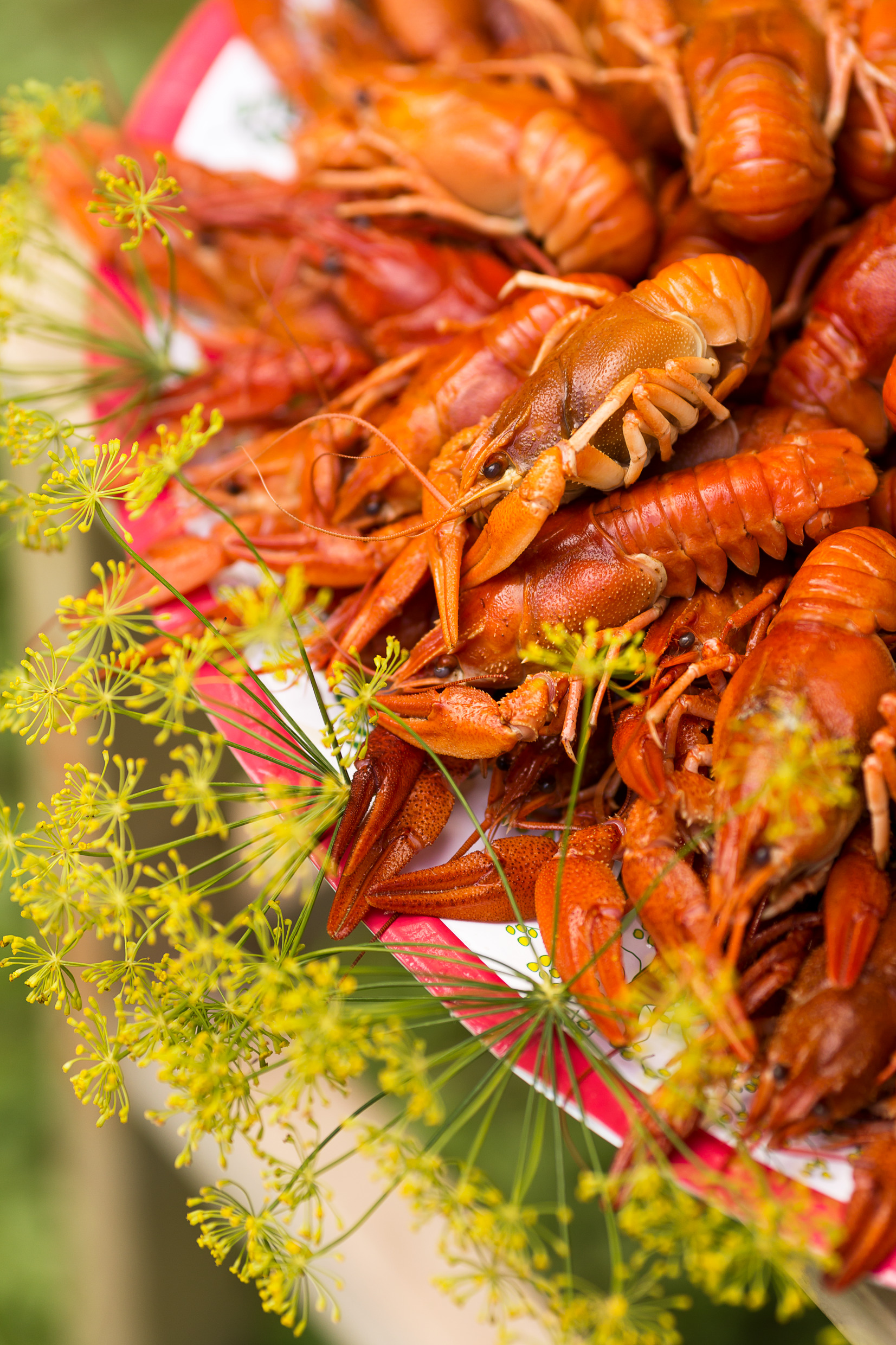
Crayfish US-style
For decades, Swedes have imported crayfish from the United States to fill the gap left by the depletion of native Swedish crustaceans when domestic catches fell victim to a fatal fungus. The Swedish “crayfish pest” first appeared at the turn of the 20th century, but it was not until the 1970s that a serious shortage of the domestic strains became apparent.
Dropping the yearly crayfish festivities in the face of dwindling Swedish supplies was, of course, never considered a possibility. So today, Sweden also imports crayfish from Turkey, China and Spain.
Domestic Swedish crayfish continue to be sold, at a premium price for their native qualities, but are in fact often American in origin (signal crayfish — Pacifastacus leniusculus). These crustaceans were planted in Swedish lakes following the outbreak of the crayfish pest.
Swedish crayfish eating 101
While Sweden now imports crayfish from other countries, Swedes continue to enjoy the crustaceans the way they always have: cold, dilled and washed down with schnapps.
The bibs, decorated with bright red crayfish, come in handy as you suck up the dill brine from each crustacean (Swedes typically don’t like to get messy) before moving on to the sometimes challenging quest of getting to the meat, while avoiding shell-peeling injuries.
There are different crayfish eating techniques. How much of the crustacean you consume is a matter of preference — and much debate. Some Swedes, like myself, will avoid sucking out the contents of the head because, well, it just doesn’t seem very appealing.
(Eating the crayfish head is, apparently, perfectly safe. The yellow blob inside the head that many mistake for a brain is actually a hepatopancreas, similar to a liver. I’m not convinced, however, that this anatomical fact makes the head any more appetizing.)
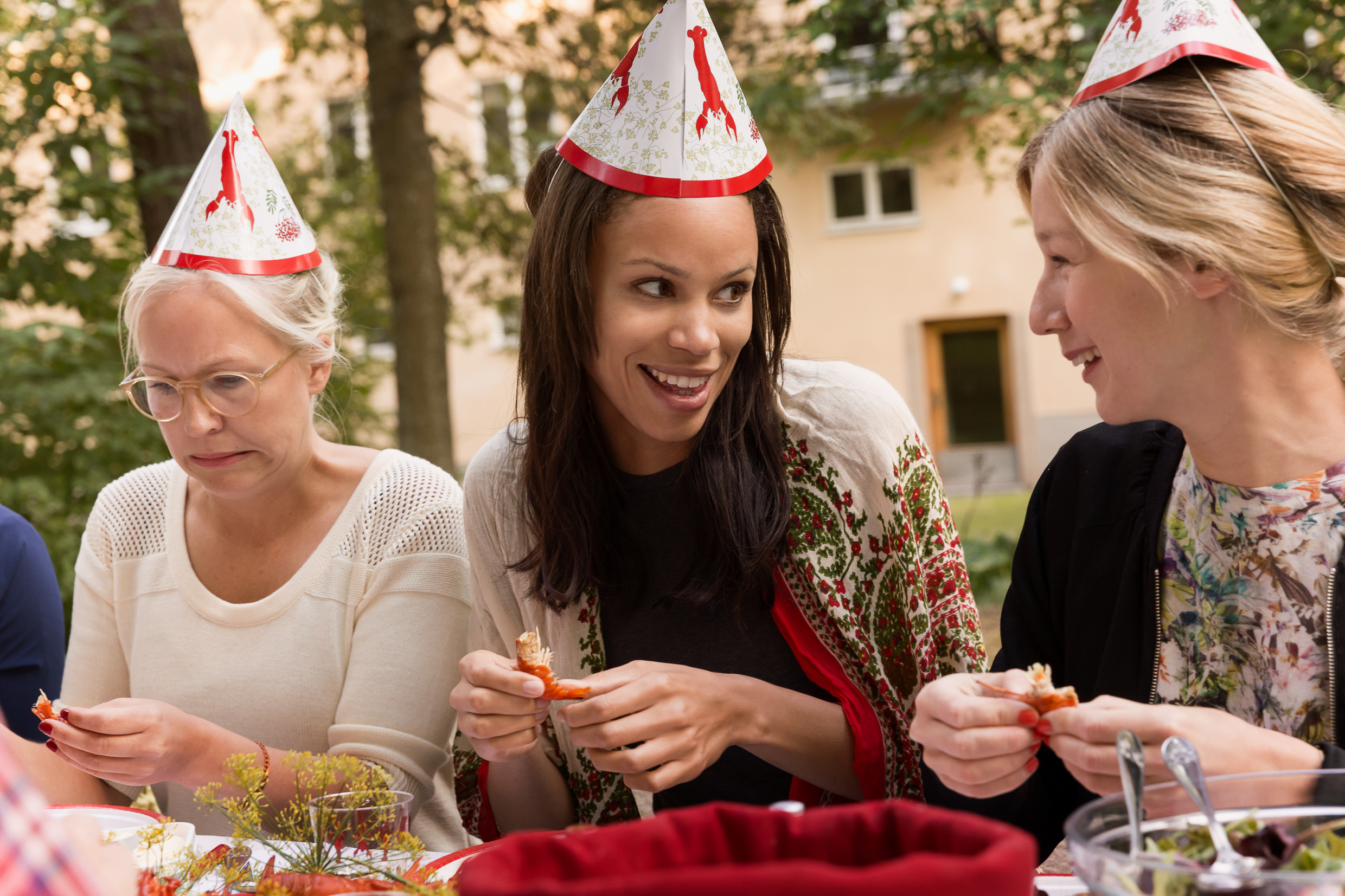
My Mom, a frugal northern Swede, is of the conviction that eating anything less than the whole crayfish (apart from the peel) is a wasteful sin. Here’s how she goes about eating her crayfish:
“I start by snapping off one of the claws. This creates a straw from which I can suck out the delicious dill brine. Then, I cut off the head just behind the eyes, lift off the ‘shield’ and dig my teeth into the head and suck out the juices.” (This is where the transcendent part of the crayfish-eating experience begins for Mom. It’s also when I, her squeamish daughter, start to shutter.)
Once the decapitated head has been consumed (“the yellow stuff can taste a little tart, in a good way”), Mom breaks off and peels the tail — this is where you’ll find most of the meat. She then picks up a crayfish cracker (looks like a nutcracker) and begins working on the claws. She cracks the shell, removes it and then uses a small fork to get the meat out.
After sucking on the now clawless, headless crayfish body to make sure she didn’t miss any of the dill juices, it’s time for a sip of akvavit and a “nubbevisa,” or drinking song. The experience complete, it’s now on to the next crayfish.
(Between rounds of schnapps and bites of crustaceans, remember to fill your belly with plenty of side dishes, or else you’ll be experiencing a legendary crayfish party hangover the next day.)
If all that crayfish-peeling seems both intimidating and arduous, make sure you seat yourself next to someone you know who is in the know, or a sympathetic and able-looking stranger. Peeling a crayfish for someone else is an act of love. Mom always offers to peel mine, even though I’ve had quite a bit of practice by now. I am more than willing to accept her offer.
The Stockhome crayfish party is Aug. 19. There are two seatings available; at noon and at 5 p.m. $85 per person; $50 kids ages 3-12 (3 and under free). Order tickets online: stockhomepetaluma.com/shop. Stockhome restaurant, 220 Western Ave., Petaluma.





